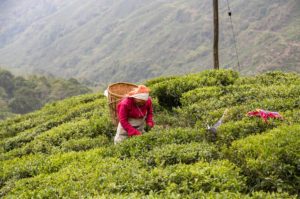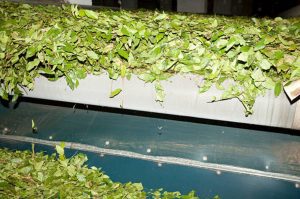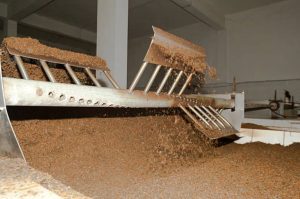Darjeeling Tea Industry Crisis 2025: The Darjeeling tea industry, long heralded as the crown jewel of Indian tea production and internationally renowned for its delicate aroma, golden liquor, and unmatched flavor, now finds itself at a precarious crossroads. Nestled in the misty foothills of the eastern Himalayas, Darjeeling’s tea gardens have produced what connoisseurs across the globe have long revered as the “Champagne of Teas.” Protected by a Geographical Indication (GI) tag, this premium product has traditionally fetched high prices in global markets and contributed significantly to the identity and economy of the region. However, beneath the lush green slopes and picturesque plantations lies an industry buckling under mounting pressure from all directions.

As we move deeper into 2025, the Darjeeling tea sector is grappling with an unprecedented convergence of crises. At the heart of the turmoil is a steep and sustained decline in tea production—a trend that has persisted for over a decade. Where Darjeeling once produced around 10 to 11 million kilograms of tea annually in its prime, current figures paint a dismal picture, with annual output now hovering at a mere 5.6 million kilograms. This dramatic drop is more than just a statistic; it is symptomatic of deeper structural and environmental problems that are eroding the foundation of this once-thriving industry.


Labor disputes and a shrinking, aging workforce further compound the issue. With wages stagnating and the cost of living soaring, tea garden workers—many of whom have devoted generations of their families to the estates—are becoming increasingly disillusioned. Younger generations are leaving the gardens in search of more stable and lucrative opportunities, often in urban centers, resulting in an acute labor shortage. The workforce that remains is aging and overburdened, with productivity declining and morale plummeting.


Economic pressures, too, are taking a severe toll. From rising input costs and falling auction prices to delayed payments and mounting debts, tea estate owners and managers are finding it increasingly difficult to break even—let alone turn a profit. Compounding these challenges is the influx of lower-cost teas from neighboring Nepal. Though similar in taste and appearance, Nepalese teas do not carry the same GI protection and are often blended with Darjeeling tea and sold under its name in domestic and international markets. This deceptive practice not only undercuts prices but also dilutes the Darjeeling brand, leaving loyal consumers confused and the region’s producers at a distinct disadvantage.
Climate change presents yet another formidable challenge. The Darjeeling hills, once blessed with a predictable rhythm of mist, rain, and sunshine—perfect for nurturing its high-quality tea—are now experiencing erratic weather patterns. Unseasonal droughts, heavier monsoons, fluctuating temperatures, and increased pest infestations are wreaking havoc on tea gardens. The vital first and second flushes, known for their high quality and premium market value, are now increasingly unreliable. As a result, even the most well-managed estates are seeing sharp declines in both quantity and quality.
This multifaceted crisis has prompted urgent calls for reform and innovation. Stakeholders across the spectrum—estate owners, trade unions, government bodies, exporters, and environmentalists—are debating the best path forward. Some advocate for the diversification of income through tourism and agroforestry. Others push for modernization, replantation, climate-resilient farming, and better support systems for workers. Meanwhile, there are growing appeals for regulatory intervention to curb the unchecked inflow of Nepalese tea and to implement protective tariffs or labeling requirements that would safeguard the integrity of Darjeeling’s GI status.
In this detailed report, we will examine each of these challenges in depth—shedding light on the underlying causes, the human stories entangled in the crisis, the data that outlines the scope of the problem, and the innovative ideas and policies being proposed as solutions. By understanding the intricacies of this crisis, we can better appreciate not only the complexities of Darjeeling tea production but also the urgency with which it must be addressed if this iconic industry is to survive and thrive in the years to come.

Darjeeling Tea Industry Crisis 2025: Historical Significance and Current Production Trends
Darjeeling tea is not just a beverage—it is a cultural emblem, a colonial legacy, and an economic lifeline for thousands in the eastern Himalayas. Its story began in the mid-1800s when the British colonial administration, looking to break China’s monopoly over tea, began experimenting with tea plantations in the hilly terrains of Darjeeling. The combination of high altitude, sloping terrains, cool climate, misty atmosphere, and well-distributed rainfall proved ideal for cultivating high-quality Camellia sinensis—the plant from which all true teas originate.
The first commercial tea garden in Darjeeling was established in 1856, and by the turn of the 20th century, the region had already gained a reputation for producing an exceptional variety of tea—light in color, floral in aroma, and with a muscatel flavor that could not be replicated anywhere else in the world. Over the decades, Darjeeling tea was exported globally and became a symbol of luxury and refinement, served in royal households, European salons, and high-end tea rooms from London to Tokyo.
The post-independence era saw a nationalization of the tea trade and the continued expansion of Darjeeling’s plantations. At its peak in the 1990s, the region boasted over 87 registered tea gardens spread across the districts of Darjeeling, Kalimpong, and Kurseong. These gardens produced approximately 10–11 million kilograms of tea per year, with nearly 80% of it exported to premium markets in Europe, the United States, and Japan. At the time, Darjeeling tea fetched record prices at auctions, driven by its Geographical Indication (GI) status and its image as an elite artisanal product.
However, the early 2000s marked the beginning of a steady and worrying decline. As per data from the Tea Board of India and various industry reports, production has dipped sharply over the past two decades. By 2010, total annual output had dropped to under 9 million kilograms. By 2022, it stood at approximately 6.6 million kilograms, and recent estimates for 2024–25 suggest production may have fallen even further to around 5.6 million kilograms—a nearly 50% decline compared to the industry’s peak years.
Multiple factors are responsible for this downward trend, all interconnected and mutually reinforcing. One of the most critical concerns is the aging of tea bushes. Many of the bushes in Darjeeling’s tea estates are well over 50 years old, with some even nearing 100. These older bushes produce fewer leaves and are more susceptible to pests and diseases. While replantation is the obvious solution, it is a capital-intensive process requiring significant investment, skilled labor, and time—at least five years before the new bushes yield commercially viable crops. Given the tight financial constraints most gardens are facing, only a handful can afford large-scale replantation programs.
Additionally, the number of plucking rounds per season has significantly reduced due to a shortage of skilled tea pluckers. In the heyday of Darjeeling tea, gardens would have upwards of 25–30 plucking rounds during a single harvesting season. Today, that number has dwindled to 10–15 in many estates. This reduction not only impacts the volume of tea harvested but also affects the quality and consistency of the famed first and second flush teas that Darjeeling is known for.
Climatic changes have further complicated the production landscape. The Darjeeling region is experiencing erratic weather patterns—shorter winters, unseasonal rains, extended dry spells, and rising temperatures. The once-predictable rhythm of the monsoon is no longer reliable, resulting in either flooding or drought conditions. These climatic inconsistencies affect the growth cycle of tea plants, alter the delicate balance of flavor compounds in the leaves, and increase the vulnerability of plantations to pest infestations and fungal diseases.
Moreover, the political instability and periodic unrest in the region, particularly related to the Gorkhaland movement, have caused multiple disruptions in the past two decades. These agitations have not only led to production shutdowns but also discouraged investment and modernisation efforts. The 104-day strike in 2017 is a case in point, during which all gardens ceased operations, resulting in an almost complete loss of the critical second flush harvest that year—a blow from which many gardens never fully recovered.
All these factors have created a perfect storm for the Darjeeling tea industry. The cumulative impact of old and unproductive bushes, unpredictable weather, labor shortages, poor estate management, and a lack of capital has led to a situation where even historically profitable gardens are now struggling to stay afloat. Many have changed ownership multiple times, some have stopped operations entirely, and several others are operating at losses, kept alive only due to their cultural legacy or the hope of future revival.
In contrast to this grim scenario, the demand for high-quality Darjeeling tea remains steady in niche markets. Tea connoisseurs, specialty retailers, and luxury brands continue to express interest in authentic Darjeeling flushes, but they are often frustrated by inconsistent supply, variable quality, and lack of traceability. Without urgent and large-scale interventions—both at the policy and grassroots levels—the region may not be able to meet even its modest export targets in the years ahead.
Historical Context: Colonial Roots and Legacy of Exploitation
The labor model in Darjeeling’s tea gardens has its roots in the colonial plantation economy, where British planters employed cheap, indentured labor—primarily from the tribal regions of present-day Jharkhand, Odisha, and Assam. These communities were relocated to the highlands of Darjeeling and settled around the tea estates. Over time, they became a permanent underclass, bound to the gardens by both livelihood and geography.
Despite India’s independence and several subsequent land and labor reforms, the core plantation structure remained unchanged. Workers continued to live on the estates in employer-provided housing, receiving in-kind benefits (like food rations, healthcare, and education for their children) in lieu of adequate wages. These provisions have eroded steadily over the years, but the system remains largely feudal in nature. The economic dependency of workers on estate management persists, with very little upward mobility or diversification of opportunities.
Thus, the historical journey of Darjeeling tea, from colonial cultivation to global acclaim and now to survival struggle, mirrors broader transitions in India’s agricultural sectors—where legacy, labor, land, and livelihood intersect in complex ways. The fall in production is not merely a technical or economic issue; it is symptomatic of deeper, systemic problems that require a holistic and sustainable solution.
Labor Challenges and Socioeconomic Implications
At the heart of Darjeeling’s world-famous tea lies a paradox: while its brew is celebrated in elite circles across the globe, the workers who labor to produce this prized commodity continue to endure marginalization, poverty, and systemic neglect. The human story of Darjeeling tea—especially that of the plantation laborers—is one of chronic underpayment, social insecurity, and generational disenfranchisement. As of 2025, these labor-related challenges have escalated to a point where they not only impact worker morale and livelihood but also directly threaten the long-term sustainability of the entire industry.
Wage Crisis: The ₹250 per Day Dilemma
As of 2025, the average wage for a tea plucker in Darjeeling hovers around ₹250–₹265 per day, depending on the estate and region. This amount is significantly lower than the minimum daily wage prescribed for industrial or agricultural labor in many other states. When adjusted for inflation and living costs in the hilly terrains—where transportation, food, and healthcare are relatively expensive—this wage is barely enough to sustain a small family.
A comparative study conducted by the Indian Institute of Plantation Management in 2024 revealed that a family of four in Darjeeling needs a minimum of ₹16,000–₹18,000 per month to survive with basic dignity. A two-adult working household, even if fully employed every working day of the month (which is rare due to weather and health factors), barely manages to cross ₹13,000–₹14,000.
This wage stagnation has led to several knock-on effects:
- High absenteeism among workers who supplement their income with work in nearby towns or in seasonal migration to cities like Siliguri, Gangtok, or Kolkata.
- Lower plucking frequency and reduced quality, as fewer workers are available to maintain harvesting schedules.
- Erosion of skill continuity, since younger generations are unwilling to join an industry that offers such poor remuneration.
Intergenerational Labor Exodus and Youth Disillusionment
One of the most visible consequences of the wage crisis is the generational shift away from tea garden work. Many of the younger generation—born and raised in the tea estates—are choosing to move away from their ancestral occupation. Armed with basic education and exposure to urban employment markets through digital media or short-term migration, they are no longer willing to settle for a life that offers minimal growth or recognition.
This exodus has led to an aging workforce. A large proportion of the current labor force comprises women over 40, many of whom have worked in the gardens since adolescence. With fewer young workers entering the system, estates are increasingly struggling to maintain even minimum manpower for daily operations.
Furthermore, the lack of proper vocational training or career guidance has resulted in a vacuum where youth who leave the estates often end up in unskilled, insecure jobs in urban slums—leading to new cycles of poverty and vulnerability.
Gender Dynamics: The Feminization of Tea Labor
Women form the backbone of Darjeeling’s tea industry. More than 60–70% of pluckers are women, owing to the belief that women have more nimble fingers and a better eye for selecting the right leaves. However, despite their pivotal role, female workers are often the most disadvantaged.
- They are paid the same meager wages as their male counterparts, but are expected to shoulder the dual burden of labor and household responsibilities.
- Access to maternal healthcare, sanitation, and childcare facilities in many tea gardens remains inadequate.
- Cases of sexual harassment or exploitation are rarely reported, given the close-knit and hierarchical nature of the estate environment.
Many women work well into their old age, suffering from chronic back pain, joint problems, and vision issues—symptoms directly linked to prolonged physical strain under difficult environmental conditions. Few receive pensions or gratuities when they retire.
Statutory Defaults and Social Security Erosion
A major point of contention between workers and estate management in recent years has been the non-payment of statutory dues, including:
- Provident Fund (PF) contributions
- Gratuity payments
- Maternity benefits
- Health insurance and ESI coverage
Multiple reports, including findings from the 2023 Labour Audit Committee for West Bengal, indicate widespread default by estate owners in fulfilling these legal obligations. In some cases, workers have gone unpaid for months, while PF accounts remain dormant for years. This financial insecurity leaves aging workers particularly vulnerable, especially those who are no longer fit for physical labor but receive no pension.
While the Plantation Labour Act, 1951 was meant to safeguard worker rights, its enforcement has been patchy. State labor departments, often understaffed and underfunded, are unable to carry out regular inspections. Political interference and the influence of powerful estate lobbies further hinder meaningful reform.
Housing, Healthcare, and Living Conditions
The living quarters provided to workers are, in many cases, relics from the colonial era. These accommodations are often dilapidated, overcrowded, and lacking in basic amenities like potable water, electricity, and sanitation. Drainage systems are poor, leading to waterborne diseases during the monsoon season. Healthcare facilities, where they exist, are usually basic dispensaries without trained doctors or adequate medicine supplies.
The COVID-19 pandemic further exposed these vulnerabilities, as workers lacked access to testing, protective equipment, or financial support during lockdowns. Several NGOs stepped in to fill the void, but long-term solutions remain elusive.
Unionization and Labor Movements
Despite these hardships, the workers of Darjeeling have a long history of organized resistance. Several labor unions, including the Himalayan Plantation Workers’ Union and the Gorkha Janmukti Morcha’s labor wing, have advocated for better wages, land rights, and compliance with statutory benefits. Periodic strikes and gheraos have brought temporary attention to these issues, but negotiations often break down without long-term resolution.
In 2022, a multi-union collective demanded a daily wage increase to ₹350 and immediate clearance of all pending PF and gratuity dues. While some marginal increases were conceded by certain estates, the wage hike fell far short of inflation-adjusted expectations. Many managements argued that they were unable to meet the demands due to falling exports and rising operational costs.
This cycle of claim and denial, strike and settlement, has become routine, with no structural reform to end the pattern.
In summary, the labor challenges in Darjeeling’s tea industry are not isolated—they are deeply embedded in the region’s history, economy, and social structures. The tea workers are the invisible custodians of Darjeeling’s international brand, yet they live on the margins of survival. Without systemic reform—wage restructuring, replantation-driven job creation, youth skill programs, better healthcare, and secure housing—the exodus of labor and the decline in productivity will continue.
To save Darjeeling tea, we must first save the people who produce it. Their dignity, prosperity, and well-being are not optional extras—they are central to the legacy and future of the tea that defines the region.
Economic Pressures and the Surge of Nepalese Tea Imports
The Darjeeling tea industry is under significant economic pressure due to the influx of cheaper Nepalese teas. In 2024, India imported between 14 to 15 million kilograms of tea from Nepal, surpassing Darjeeling’s own production. These Nepalese teas, often similar in appearance and taste, are sometimes blended with Darjeeling tea, affecting its market value and authenticity. The cost advantage of Nepalese producers, who benefit from lower labor costs and less stringent regulations, further exacerbates the competitive disparity.
Climate Change and Environmental Challenges
Climate change poses a formidable threat to Darjeeling tea cultivation. Studies indicate a rise in maximum temperatures and a decrease in annual rainfall in the region, leading to reduced productivity and increased vulnerability to pests and diseases. These climatic shifts have disrupted traditional harvesting schedules and compromised the quality of the tea produced.
Government Initiatives and Industry Responses
In response to these challenges, the West Bengal government has initiated policies to reallocate portions of tea garden land for tourism and allied purposes, aiming to diversify income sources for the industry. However, this move has sparked debates about the potential impact on tea production and the livelihoods of workers. Industry leaders are calling for comprehensive strategies, including financial packages, interest subventions, and the introduction of minimum import prices for teas from Nepal, to revive and sustain the Darjeeling tea industry.
The Darjeeling tea industry stands at a crossroads, facing a confluence of challenges that threaten its survival. Addressing these issues requires a collaborative approach involving government intervention, industry innovation, and support for the workforce. Embracing sustainable practices, enhancing climate resilience, ensuring fair labor policies, and implementing stringent quality controls are imperative to preserve the legacy of Darjeeling tea and secure its place in the global market.
-
“Bitter Brew: Darjeeling’s Tea Garden Workers Are Paid Poorly, Have No Land Rights”
This article from IndiaSpend examines the meager wages and lack of land rights among Darjeeling tea workers, highlighting systemic issues within the industry.
https://www.indiaspend.com/assam/bitter-brew-darjeelings-tea-garden-workers-are-paid-poorly-have-no-land-rights-850456 -
“India: Around 7000 Tea Workers Across Ten Estates Strike Over Unpaid Wages”
A report by the Business & Human Rights Resource Centre detailing strikes by tea workers in Darjeeling over unpaid wages, reflecting broader labor issues in the region.
https://www.business-humanrights.org/en/latest-news/india-around-7000-tea-workers-across-ten-estates-strike-over-unpaid-wages/ -
“Darjeeling Tea Production Falls 9% in 2023 to Lowest Level in 6 Years”
A Times of India report on the significant decline in Darjeeling tea production, affecting the industry’s economic stability and worker livelihoods.
https://timesofindia.indiatimes.com/business/india-business/darjeeling-tea-production-falls-9-in-2023-to-lowest-level-in-6-years/articleshow/106618384.cms
Also read: Home | Channel 6 Network – Latest News, Breaking Updates: Politics, Business, Tech & More

